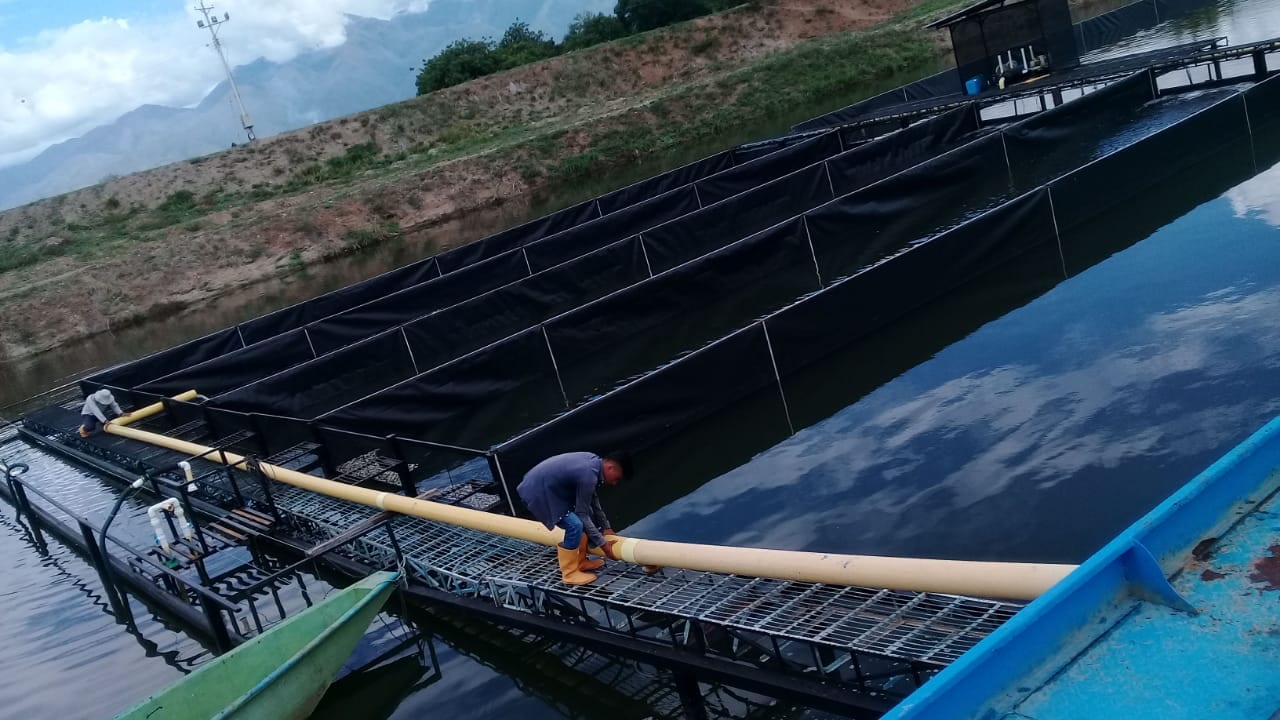Colombian Customer Works with USSEC to Develop Country’s Second IPRS
- Category:
- Aquaculture
- General News

USSEC and Marpez, a subsidiary of Piscicola Botero, have successfully developed Colombia’s second In Pond Raceway System (IPRS) project. Marpez is one of the largest tilapia operations in the country. As previous results in other IPRS projects developed in this country demonstrate, the success achieved from the technical, economic and environmental points of view allowed this producer to make a decision to completely transition this farm of nearly 20 Ha to IPRS technology with a high expectation of profitable and sustainable growth.
IPRS was selected by this Colombian producer as a means to address the increasing demand for aquaculture products in the domestic market as well as exports in the face of mounting economic and environmental constraints to the growth of Colombian aquaculture production. IPRS technology addresses these constraints by allowing greater management control that yields higher fish production at lower per-unit cost through improved fish survival and feed conversion. The principle of the IPRS is to concentrate fish in raceways within a pond and provide them with constant water circulation to maintain optimal water quality and to improve feed management. IPRS also has the potential to reduce solid waste loading in the pond by concentrating and removing it from the downstream end of raceway units.
Marpez became interested in IPRS technology through USSEC’s IPRS seminars and after following positive results in other IPRS operations in the Americas region. A USSEC team visited the farm several times and guided them to start IPRS construction in May 2019. Over the next few next months, construction work of raceways was finished, and the fish were stocked in early October. After an average of 147 days, Marpez reached a production close to 43 metric (MT) tons of tilapia for the first crop at the four raceways.
Colombia began developing IPRS in 2019 and the results are highly promising, with the main limitations being distorted: the initial investment cost and the energy costs. Despite this initial investment (around $9,000 USD / geomembrane´s raceways) which is deferred to five years, the system showed three times higher production, 76 ton/ha/year, compared to the traditional system of pond production, 25 ton/ha/year, and significatively reduces the energy cost per unit or kg produced. The fish in the raceways were fed with feeds of different protein levels of protein (38% to 30%) containing more than 50% U.S. Soy and reaching a feed conversion ratio (FCR) of 1,293:1. The system was stocked with gray tilapia from its own hatchery of an improved strain.
Colombia is one of the leading fish producers (tilapia) in Latin American and successfully adopting IPRS technology will further increase aquaculture production and the consumption of U.S. soybean meal in aquafeeds. IPRS, together with soy-based feeds, are central to USSEC’s mission to support and promote sustainable aquaculture around the world. As more Latin American producers are adopting this technology and enhancing their business, USSEC is looking to help the industry grow in the region and generate more food to the global population.


